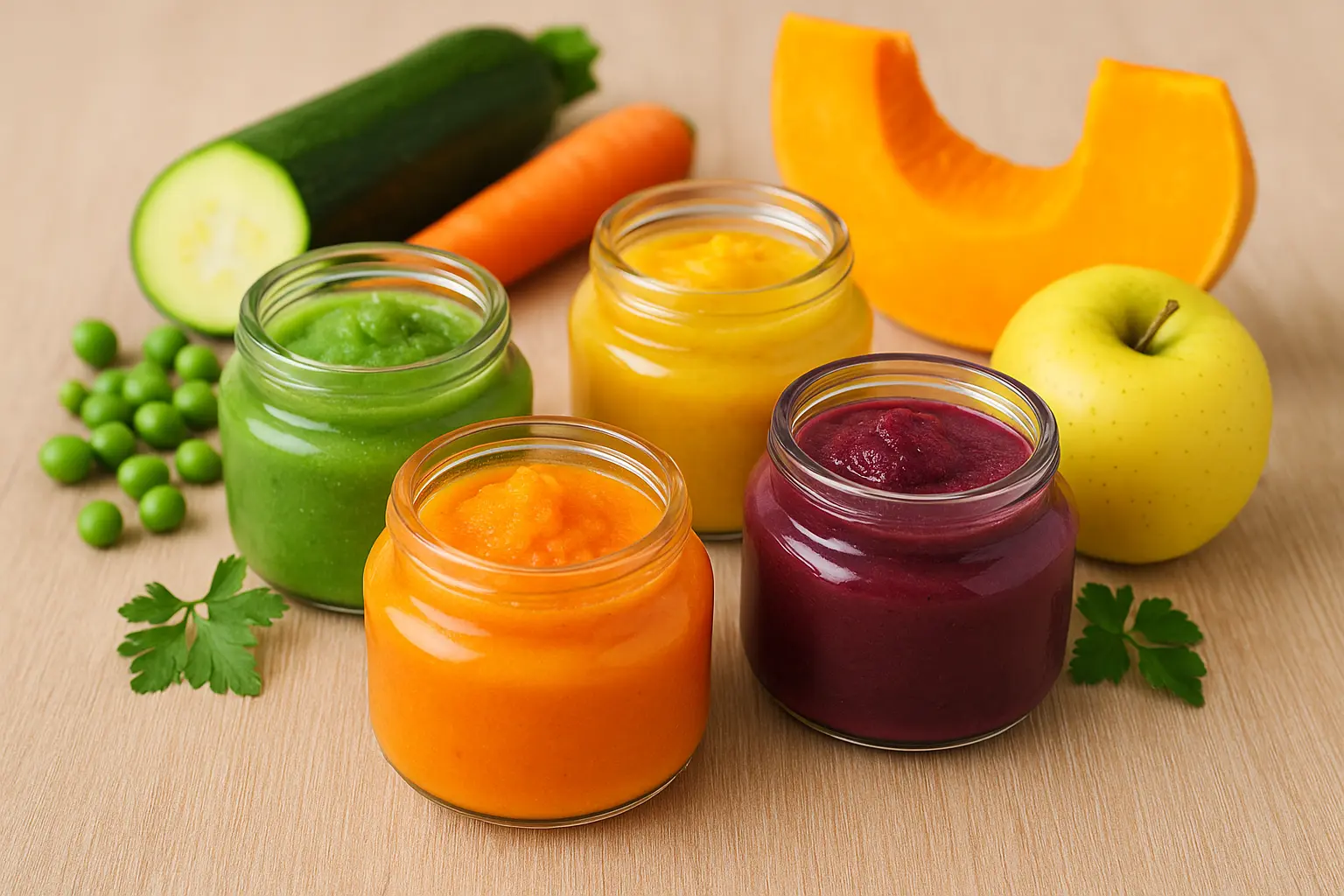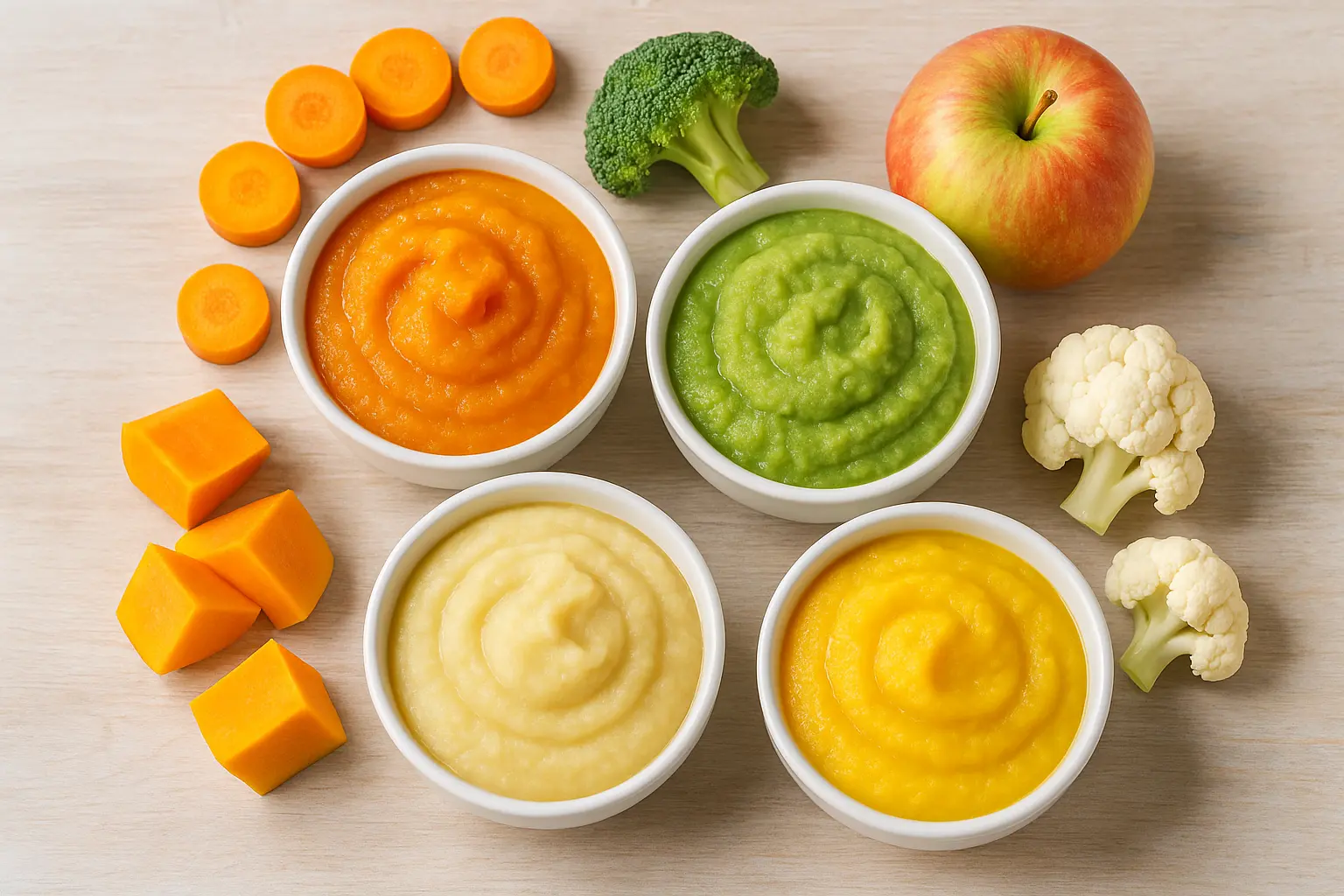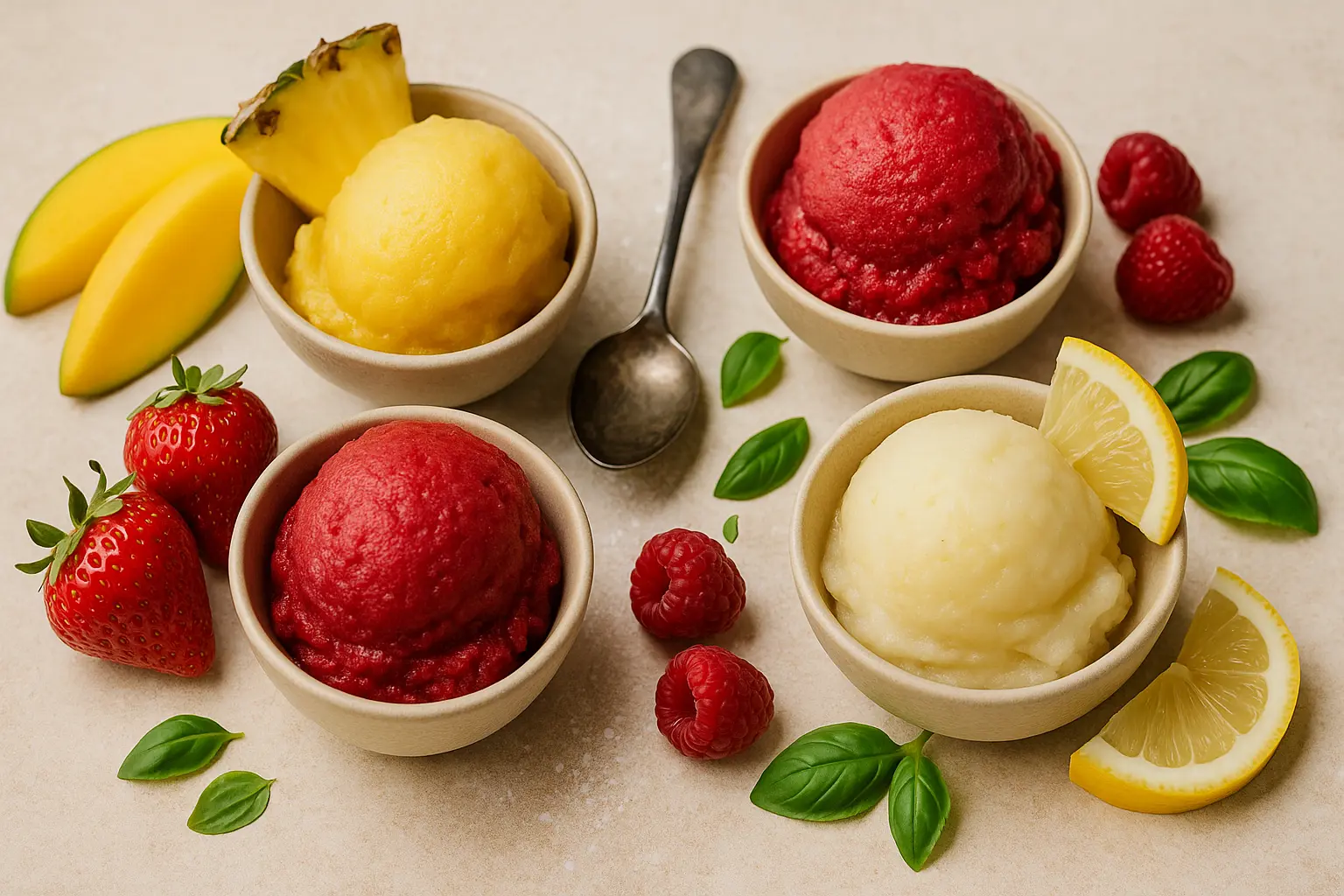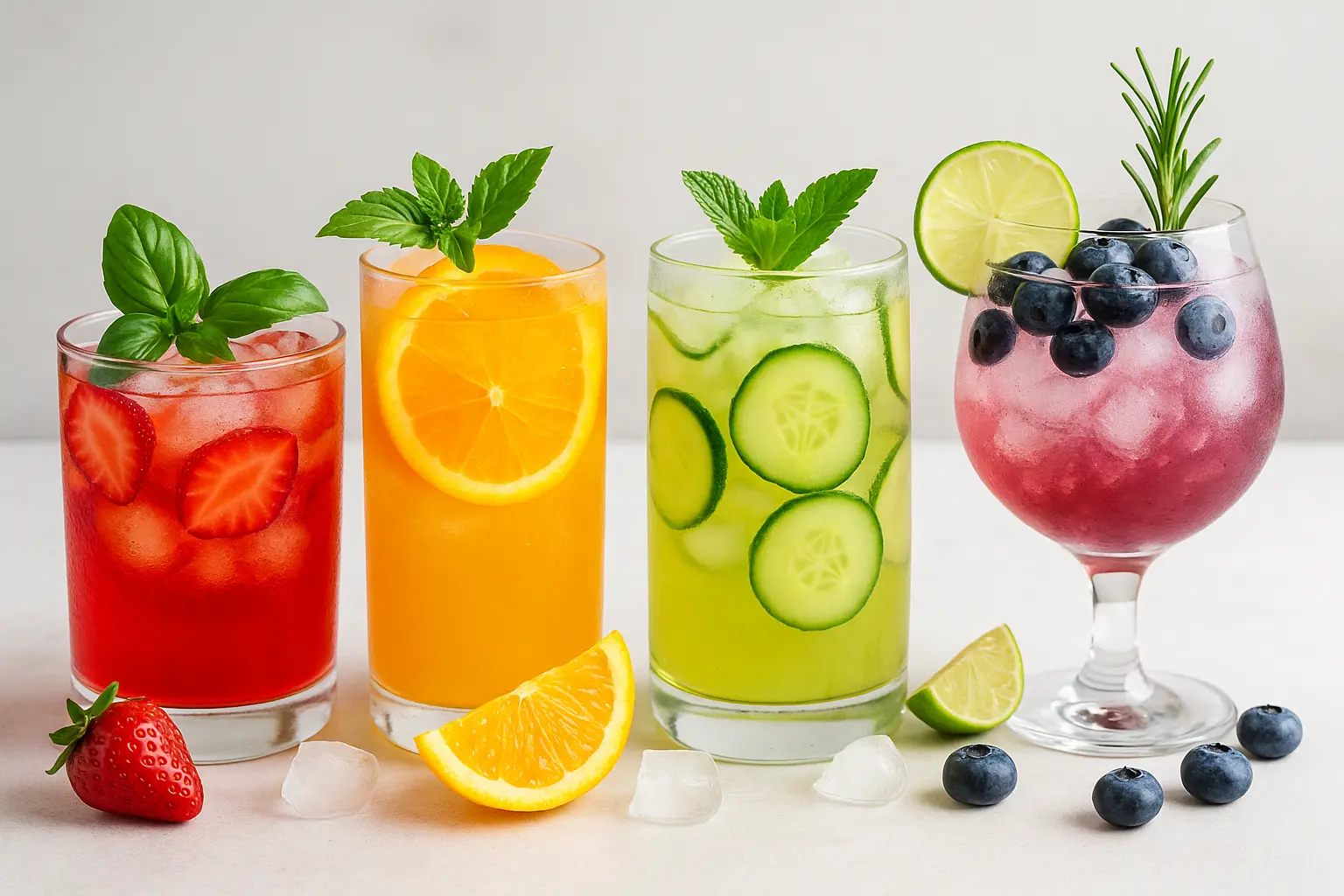Introducing solids to your baby is an exciting milestone — it’s not just about nutrition; it’s about opening a whole new world of textures, colors, and flavors. While plain purees are often the first step, adding natural flavors early on can help your baby develop a more adventurous palate.
This guide will walk you through the why, when, and how of creating flavor-boosted, dairy-free baby food recipes using seasonal vegetables, herbs, and gentle spices. Whether you’re a first-time parent, a beginner in the kitchen, or someone seeking new ideas to keep mealtime exciting for your little one, this comprehensive resource will set you up for success.

Why Flavor Matters in Baby Food
Many parents worry about introducing too much flavor too soon. However, research shows that early exposure to a variety of tastes can shape your baby’s eating habits for life. Here’s why adding flavor (naturally!) is so beneficial:
- Encourages Healthy Eating Later
Babies exposed to diverse flavors early are more likely to enjoy vegetables and complex foods as they grow. - Prevents Picky Eating
Limiting foods to bland tastes may make it harder to transition to family meals. - Supports Nutritional Variety
Using seasonal produce means more vitamins, minerals, and antioxidants in each bite. - Develops a Rich Palate
Natural herbs and gentle spices help babies distinguish between flavors, setting them up for a lifetime of enjoying real food.
When to Introduce Flavor-Boosted Foods
Most pediatricians recommend starting solids between 4 and 6 months, depending on your baby’s readiness signs:
- Sitting up with minimal support
- Showing interest in food
- Loss of the tongue-thrust reflex
- Ability to grab and mouth objects
Once your pediatrician gives the go-ahead, you can begin with single-ingredient purees and then slowly combine flavors.
Tip: Always introduce one new food at a time and wait 3–5 days before trying another to monitor for allergies.
Seasonal Vegetables for Maximum Flavor & Nutrition
Choosing vegetables that are in season ensures freshness, better taste, and higher nutritional value. Here’s a seasonal guide for baby-friendly veggies:
Spring
- Peas
- Carrots
- Zucchini
- Spinach
Summer
- Sweet corn
- Pumpkin
- Bell peppers (mild, skinless for babies)
- Green beans
Autumn
- Sweet potatoes
- Butternut squash
- Broccoli
- Cauliflower
Winter
- Kale
- Parsnips
- Beetroot
- Turnip
Essential Tools for Making Baby Food at Home
You don’t need a high-end baby food processor — just a few reliable kitchen tools:
- Blender or food processor – for smooth purees
- Steamer basket – preserves nutrients in vegetables
- Ice cube trays or small storage containers – for batch freezing
- Silicone spatula – for scraping every bit of goodness out
- Fine mesh strainer – optional for extra smoothness for early-stage eaters
Safe Flavor Boosters for Babies
Babies don’t need salt or added sugar, but that doesn’t mean food has to be bland. Here are safe, gentle flavor enhancers:
- Herbs (finely chopped): basil, parsley, dill, coriander, mint
- Mild spices: cinnamon, nutmeg, turmeric, mild paprika (in tiny amounts)
- Natural sweetness: carrots, sweet potatoes, pumpkin, apples, pears
- Healthy fats: avocado, extra virgin olive oil, coconut oil (small amounts for texture and brain development)
Step-by-Step Guide: How to Make Flavor-Boosted Baby Purees
Step 1: Choose Seasonal Veggies
Pick 2–3 vegetables that are in season and pair well together.
Step 2: Prep and Cook
Wash, peel, and chop vegetables into small, even pieces. Steam or bake until tender.
Step 3: Blend to Desired Consistency
For early eaters (6–8 months), aim for smooth purees. For older babies (8–12 months), you can leave some texture.
Step 4: Add Flavor Boosters
Incorporate mild herbs or spices during blending.
Step 5: Store Safely
Cool puree quickly and store in the fridge (up to 48 hours) or freezer (up to 2 months).
10 Flavor-Boosted Baby Food Recipes
1. Sweet Potato & Cinnamon Purée
Why it’s great: Rich in beta-carotene and naturally sweet, with a gentle hint of cinnamon for warmth.
Ingredients:
- 1 medium sweet potato, peeled and diced
- Pinch of cinnamon
- 1 tsp olive oil
Method:
- Steam sweet potato until soft.
- Blend with cinnamon and olive oil until smooth.
2. Zucchini, Pea & Mint Mash
Why it’s great: Fresh, light, and packed with vitamins.
Ingredients:
- 1 small zucchini, chopped
- ½ cup peas
- Few fresh mint leaves
Method:
- Steam zucchini and peas together.
- Blend with mint until smooth.
3. Carrot, Apple & Ginger Purée
Why it’s great: A naturally sweet blend with a gentle zing.
Ingredients:
- 2 medium carrots, peeled
- 1 sweet apple, peeled and cored
- Tiny pinch of fresh grated ginger
Method:
- Steam carrots and apple until tender.
- Blend with ginger until smooth.
4. Broccoli, Cauliflower & Basil Purée
Why it’s great: Mildly flavored cruciferous blend boosted by basil.
Ingredients:
- ½ cup broccoli florets
- ½ cup cauliflower florets
- Few fresh basil leaves
Method:
- Steam vegetables until soft.
- Blend with basil leaves until smooth.
5. Beetroot & Pear Purée
Why it’s great: Vibrant, sweet, and iron-rich.
Ingredients:
- 1 small beetroot, peeled and diced
- 1 ripe pear, peeled and cored
Method:
- Steam beetroot and pear until tender.
- Blend until smooth.
6. Butternut Squash & Parsley Purée
Why it’s great: Creamy and comforting with a fresh herbal twist.
Ingredients:
- 1 cup butternut squash cubes
- Few parsley leaves
Method:
- Steam squash until soft.
- Blend with parsley until smooth.
7. Green Bean & Potato Mash
Why it’s great: Soft, creamy, and a good source of fiber.
Ingredients:
- ½ cup green beans, trimmed
- 1 small potato, peeled
Method:
- Steam both until tender.
- Mash or blend to desired consistency.
8. Pumpkin & Coconut Purée
Why it’s great: Subtle tropical sweetness with healthy fats for brain development.
Ingredients:
- 1 cup pumpkin cubes
- 1 tsp coconut milk
Method:
- Steam pumpkin until soft.
- Blend with coconut milk until smooth.
9. Spinach, Pea & Apple Purée
Why it’s great: A bright green puree rich in iron and vitamin C.
Ingredients:
- 1 cup spinach leaves
- ½ cup peas
- ½ apple, peeled and cored
Method:
- Steam all together until tender.
- Blend until smooth.
10. Lentil & Carrot Purée
Why it’s great: Protein-rich and gentle on the stomach.
Ingredients:
- ¼ cup red lentils, rinsed
- 1 carrot, peeled and chopped
Method:
- Simmer lentils and carrot in water until soft.
- Blend until smooth.
Batch Cooking and Storage Tips
- Freeze in Ice Cube Trays: Portion control and easy reheating.
- Label Everything: Include the name and date.
- Defrost Safely: Overnight in the fridge or gently warmed on the stove.
- Mix Before Serving: Separation is natural, just stir well.
Transitioning to Chunkier Textures
As your baby gets older (around 8–10 months), start increasing texture:
- Mash with a fork instead of pureeing completely
- Introduce soft finger foods alongside purees
- Keep herbs and spices mild but slightly more pronounced
Common Mistakes to Avoid
- Adding Salt or Sugar – Babies’ kidneys are too immature for salt, and sugar can promote unhealthy habits.
- Skipping Allergen Testing – Always test individual foods before mixing.
- Overcooking Veggies – This can reduce flavor and nutrients.
- Forgetting Variety – Rotate vegetables weekly for balanced nutrition.
Conclusion
Flavor-boosted baby food doesn’t just feed your child; it shapes their future relationship with food. By introducing seasonal vegetables, gentle herbs, and mild spices, you’re giving them the best possible start toward a healthy, adventurous appetite.
Remember: the goal isn’t just to fill tiny tummies — it’s to inspire tiny tastebuds.
Leave a comment
Your email address will not be published. Required fields are marked *




















